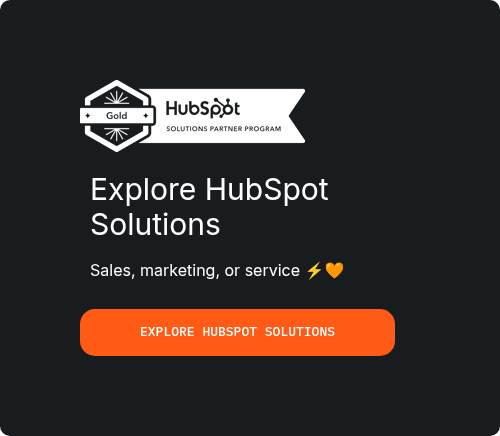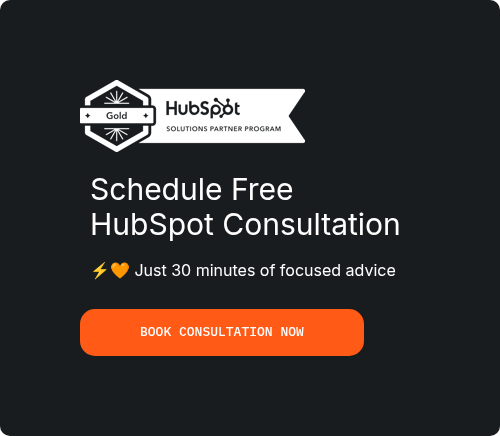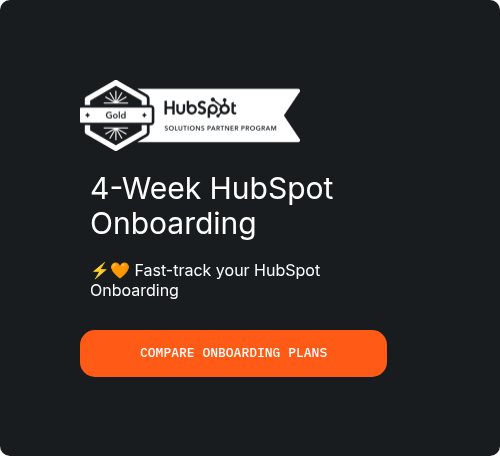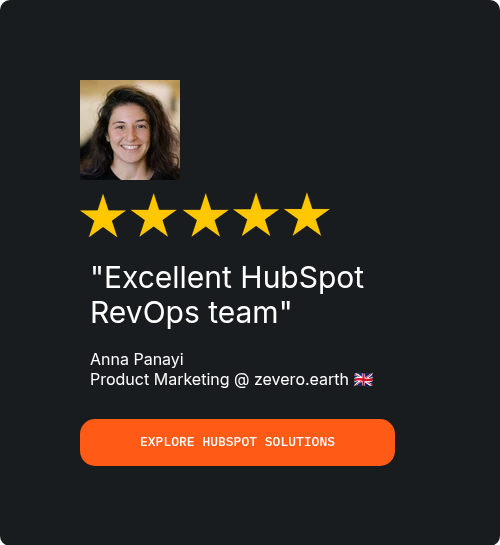The Ultimate 5-Step HubSpot Website Migration Guide for a Seamless Transition

In the ever-evolving digital landscape, a website migration is no longer a matter of if, but when. For businesses aiming for scalable growth, the decision to migrate their website to a more robust and integrated platform is a pivotal one. A HubSpot website migration represents a significant opportunity to not only enhance your online presence but to fundamentally transform your marketing, sales, and customer service operations. However, the process is not without its challenges. Industry data reveals a startling statistic: a significant number of data migration projects either fail to meet their objectives, exceed their budget, or are aborted altogether.
This guide is designed to demystify the HubSpot website migration process, providing a comprehensive, step-by-step framework to ensure a seamless and successful transition. We will delve into the strategic imperatives behind such a move, the critical planning stages, the technical intricacies, and the post-launch strategies that will set you up for long-term success. Whether you are considering a WordPress to HubSpot migration or moving from another platform, this article will equip you with the knowledge and evidence-based insights to navigate the complexities of this critical business initiative.
Why Migrate to HubSpot? The Business Case for a Platform Shift
The digital ecosystem is replete with a plethora of content management systems (CMS), with WordPress being the most ubiquitous, powering over 43% of all websites. While WordPress has been a stalwart for many, its fragmented nature, reliance on a multitude of plugins, and the constant need for maintenance can become a significant bottleneck for growing businesses. This is where HubSpot emerges as a compelling alternative, offering a unified platform that integrates a powerful CMS with a world-class CRM, marketing automation, sales, and service hubs. Unlike traditional enterprise content management systems that can be complex and siloed, HubSpot provides an integrated solution that serves as a customer data platform, unifying all customer interactions in one place.
The move to HubSpot is not merely a change of software; it is a strategic business decision that can yield a significant return on investment (ROI). HubSpot's own data indicates that 95% of their customers achieve a positive ROI, with an average saving of over $100,000 in the first two years.
These impressive figures are a testament to the platform's ability to drive efficiency, enhance productivity, and ultimately, boost revenue. For businesses seeking to break free from the constraints of a disjointed tech stack and move toward platform consolidation, a HubSpot website migration offers a pathway to a more streamlined and data-driven future. This consolidation also supports broader revenue operations alignment across marketing, sales, and service teams.
|
Feature
|
WordPress
|
HubSpot
|
Advantage of HubSpot
|
|
Core Functionality
|
CMS
|
All-in-one Platform (CMS, CRM, Marketing, Sales, Service)
|
Integrated system for a single source of truth.
|
|
Ease of Use
|
Requires technical expertise for customization and maintenance
|
User-friendly interface with drag-and-drop functionality
|
Lower barrier to entry and reduced reliance on developers.
|
|
Security
|
Vulnerable to plugin conflicts and security breaches
|
Managed and secured by HubSpot
|
Enhanced security and reliability.
|
|
Support
|
Community-based support
|
Dedicated customer support team
|
Professional and timely assistance.
|
|
Cost
|
Lower initial cost, but hidden costs for plugins and maintenance
|
Higher upfront cost, but predictable and all-inclusive
|
Transparent pricing and better long-term value.
|
For businesses that are serious about growth, the conversation is shifting from "Why should we migrate?" to "How soon can we migrate?". The allure of a single, unified platform that provides a 360-degree view of the customer is a powerful one. The subsequent sections of this guide will provide a detailed roadmap for a successful HubSpot website migration.
Step 1: The Strategic Planning Phase – Laying the Foundation for Success
A successful HubSpot website migration is not a haphazard affair; it is a meticulously planned and executed strategic initiative. The planning phase is arguably the most critical stage, as it sets the foundation for the entire project. As evidenced by the high failure rates of data migration projects, where a staggering 80% of projects overrun their budgets or are aborted altogether [1], a comprehensive plan is not just a recommendation—it's a necessity. This initial phase is all about defining your goals, understanding the scope of the project, and assembling the right team to see it through.
Defining Your “Why”: Setting Clear Goals and Objectives
Before you even think about the technical aspects of the migration, it's crucial to have a clear understanding of why you're migrating. What are the specific business objectives you're trying to achieve? Are you looking to increase leads, improve conversion rates, enhance the user experience, or all of the above? These goals will serve as your North Star throughout the migration process, guiding your decisions and helping you measure success.
According to HubSpot's ROI report, businesses that migrate to their platform see a 3x increase in lead generation and a 94% increase in deal closures after just six months. These are the kinds of tangible outcomes that should inform your goal-setting process.
Your goals should be SMART: Specific, Measurable, Achievable, Relevant, and Time-bound. For example, a SMART goal for your HubSpot migration could be: "To increase marketing qualified leads (MQLs) by 30% within the first six months of launching the new HubSpot website."
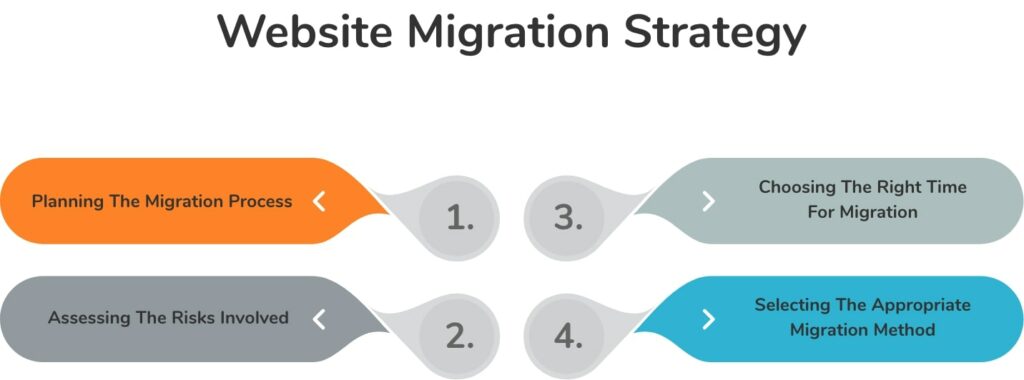
Assembling Your Migration Dream Team
A successful migration is a team sport. It requires a cross-functional team of stakeholders from various departments, including marketing, sales, IT, and leadership. Here are the key roles to consider for your migration team:
•Project Manager: The linchpin of the entire operation, responsible for keeping the project on track, on time, and on budget.
•Marketing Lead: The voice of the marketing team, ensuring that the new website aligns with the company's marketing goals and strategies.
•Sales Lead: To ensure the new website and CRM will support the sales team's processes and goals.
•IT/Developer Lead: The technical expert who will handle the nitty-gritty of the migration, including data mapping, redirects, and DNS changes.
•Content Strategist: Responsible for auditing the existing content and developing a content strategy for the new website.
•SEO Specialist: To ensure that the migration has a minimal negative impact on search engine rankings and to identify opportunities for SEO improvement.
Choosing Your Migration Path: A Phased Approach vs. a Full-Scale Launch
There are two primary approaches to a website migration: a phased approach or a full-scale launch. A phased approach involves migrating the website in smaller, manageable chunks, while a full-scale launch involves migrating the entire website at once. The right approach for your business will depend on the size and complexity of your website, your risk tolerance, and your available resources.
A phased approach is generally recommended for larger, more complex websites, as it allows you to test and iterate as you go, minimizing the risk of a major failure. A full-scale launch can be a good option for smaller, simpler websites, but it carries a higher risk. Regardless of the approach you choose, it's crucial to have a detailed project plan with clear timelines and milestones.
Step 2: The Pre-Migration Audit – A Deep Dive into Your Digital Assets
Before you can build your new home on HubSpot, you need to take a thorough inventory of your current one. The pre-migration audit is a critical step that involves a comprehensive analysis of your existing website, from its content and SEO performance to its technical architecture. This audit will not only help you identify what to keep, what to improve, and what to discard, but it will also provide a baseline against which you can measure the success of your migration. Given that only one in ten site migrations result in improved search engine rankings [4], a meticulous audit is your best defense against a post-migration dip in performance.
Content Audit: The Heart of Your Website
Your content is the lifeblood of your website. A content audit is the process of systematically reviewing all of your website's content to assess its quality, relevance, and performance. Tehis will help you make informed decisions about which content to migrate, which to update, and which to leave behind. Here are the key steps in a content audit:
1. Create a Content Inventory: Using a tool like Screaming Frog or by manually creating a spreadsheet, compile a list of all the pages on your website. This inventory should include the URL, page title, meta description, word count, and other relevant data.
2. Analyze Content Performance: For each piece of content, analyze its performance using metrics such as page views, time on page, bounce rate, and conversion rate. This will help you identify your high-performing content that should be prioritized for migration.
3. Assess Content Quality: Evaluate the quality of your content based on factors such as accuracy, readability, and relevance to your target audience. This is also a good time to identify any content gaps that you can address on your new HubSpot website.
|
Content Audit Checklist
|
Description
|
Tools
|
|
Content Inventory
|
Create a comprehensive list of all website content.
|
Screaming Frog, Google Analytics
|
|
Performance Analysis
|
Analyze key metrics to identify high-performing content.
|
Google Analytics, HubSpot
|
|
Quality Assessment
|
Evaluate content for accuracy, relevance, and readability.
|
Grammarly, Hemingway Editor
|
|
Content Mapping
|
Map old URLs to new HubSpot URLs.
|
Spreadsheet
|
SEO Audit: Protecting Your Hard-Earned Rankings
A website migration can have a significant impact on your SEO. A thorough SEO audit is essential to minimize the risk of a post-migration traffic drop.
Here are the key areas to focus on in your SEO audit:
•Keyword Rankings: Identify the keywords that are driving the most traffic to your website. This will help you prioritize your SEO efforts during and after the migration.
•Backlinks: Analyze your backlink profile to identify your most valuable backlinks. You'll need to ensure that these backlinks are redirected to the new pages on your HubSpot website.
•Technical SEO: Identify and fix any technical SEO issues on your current website, such as broken links, duplicate content, and crawl errors. This will ensure that your new HubSpot website is built on a solid technical foundation.
Technical Audit: Under the Hood of Your Website
A technical audit involves a deep dive into the technical aspects of your website. This will help you identify any potential technical roadblocks that could derail your migration. Here are the key areas to focus on in your technical audit:
•Website Architecture: Analyze the structure of your website, including its navigation, URL structure, and internal linking. This will help you design a more user-friendly and SEO-friendly architecture for your new HubSpot website.
•Website Speed: Analyze your website's loading speed. A slow website can have a negative impact on both user experience and SEO. The average WordPress site takes 3.21 seconds to load, nearly double the 1.65-second speed of sites that dominate Google search results [5]. Migrating to HubSpot presents an opportunity to significantly improve your website's performance.
•Mobile-Friendliness: Ensure that your website is fully responsive and provides a good user experience on mobile devices. With over 63% of consumers preferring to find information on mobile devices [6], a mobile-friendly website is no longer a luxury—it's a necessity.
Step 3: The Migration Execution – Bringing Your New Website to Life
With a solid plan in place and a thorough audit of your existing assets, it's time to roll up your sleeves and get to work on the migration itself. This is the technical heart of the project, where you'll be moving your data, content, and design to the HubSpot platform. While this phase can be complex, a methodical approach and a focus on best practices will help ensure a smooth and successful transition. Given that a staggering 70% of CRM migration projects fail due to poor planning or execution [7], a meticulous and well-managed execution phase is paramount.
Data Migration: Moving Your Most Valuable Asset
Your data is arguably your most valuable digital asset. A successful data migration is the cornerstone of a successful HubSpot website migration. This process involves extracting your data from your current CMS and importing it into the HubSpot platform. Effective data governance practices are essential during this phase to ensure data quality, security, and compliance. Here's a breakdown of the key steps:
1. Data Mapping: This is the process of matching the data fields from your old CMS to the corresponding fields in HubSpot. For example, you'll need to map your blog post titles, author names, and publication dates to the appropriate fields in the HubSpot blog tool. This is a critical aspect of system integration to ensure seamless data flow.
2. Data Cleansing: Before you import your data into HubSpot, it's a good idea to clean it up. This involves removing any duplicate or irrelevant data and correcting any errors. A clean database will ensure that your new HubSpot portal is organized and efficient from day one. Strong data governance protocols should be in place to maintain data integrity throughout this process.
3. Data Import: Once your data is mapped and cleansed, you can import it into HubSpot. HubSpot provides a variety of tools to help you with this process, including a built-in import tool and the ability to work with a HubSpot migration partner.
Building Your New Website on HubSpot CMS Hub
With your data successfully migrated, it's time to build your new website on the HubSpot CMS Hub. This is where you'll bring your design to life and create a user experience that is both engaging and effective. The HubSpot template setup process is crucial at this stage, as it establishes the foundation for your site's design consistency and scalability. Here are some of the key features of the HubSpot CMS Hub that you'll be leveraging:
•Drag-and-Drop Editor: The HubSpot CMS Hub features an intuitive drag-and-drop editor that makes it easy to create and edit pages without any coding knowledge.
•Themes and Templates: HubSpot offers a wide variety of pre-built themes and templates that you can customize to match your brand. You can also create your own custom themes and templates for a truly unique design. A well-executed HubSpot template setup ensures consistency across all pages and simplifies future content creation.
•Smart Content: With HubSpot's Smart Content feature, you can personalize the content on your website based on the visitor's demographics, behavior, and location. This allows you to deliver a more relevant and engaging experience to your visitors and supports advanced marketing automation strategies.
Implementing 301 Redirects: A Critical Step for SEO
When you migrate your website to a new platform, the URLs of your pages will likely change. If you don't implement 301 redirects, you'll lose all of the SEO value that you've built up over the years. A 301 redirect is a permanent redirect that tells search engines that a page has moved to a new location. This ensures that your website's authority and rankings are transferred to the new URLs.
It's crucial to create a comprehensive list of all your old URLs and map them to their new counterparts on the HubSpot website. This can be a time-consuming process, but it's absolutely essential for preserving your SEO. There are a variety of tools available to help you with this process, including Screaming Frog and the HubSpot SEO tool.
Step 4: The Launch and Post-Launch Phase – Going Live and Optimizing for Success
The moment of truth has arrived. After weeks or even months of planning, auditing, and building, it's time to launch your new HubSpot website. This is an exciting but also a nerve-wracking time. A successful launch is not just about flipping a switch; it's about a carefully orchestrated series of events that will ensure a smooth transition and a positive user experience. And the work doesn't stop once the site is live. The post-launch phase is just as critical, as it's when you'll be monitoring your website's performance and making data-driven optimizations to ensure its long-term success.
The Pre-Launch Checklist: Your Final Sanity Check
Before you go live, it's essential to conduct a final pre-launch check to ensure that everything is in order. This will help you catch any last-minute issues that could derail your launch. Here's a checklist of items to review:
•301 Redirects: Double-check that all of your 301 redirects are in place and working correctly.
•Analytics: Ensure that your Google Analytics and HubSpot tracking codes are properly installed on all pages.
•Forms: Test all of your forms to ensure that they are capturing leads correctly and that the data is being sent to your HubSpot CRM.
•Links: Conduct a final crawl of your website to check for any broken links.
•Mobile-Friendliness: Test your website on a variety of mobile devices to ensure that it is fully responsive and provides a good user experience.
The Launch: Flipping the Switch
The launch itself is a relatively simple process that involves updating your DNS records to point to your new HubSpot website. However, it's important to time your launch carefully to minimize any potential disruption to your business. It's generally a good idea to launch during a period of low traffic, such as a weekend or a holiday.
Once you've updated your DNS records, it can take up to 48 hours for the changes to propagate across the internet. During this time, some visitors may still be directed to your old website. It's important to monitor your website closely during this period to ensure that everything is working as expected.
Post-Launch Monitoring: Keeping a Close Eye on Your KPIs
Once your new website is live, the real work begins. The post-launch phase is all about monitoring your website's performance and making data-driven optimizations to ensure its long-term success. Here are the key metrics to monitor:
•Organic Traffic: Keep a close eye on your organic traffic to see if there has been any drop-off after the migration. A slight dip in traffic is normal, but a significant and sustained drop could indicate a problem with your SEO.
•Keyword Rankings: Monitor your keyword rankings to see if there have been any changes after the migration. If you see a drop in rankings for your target keywords, you'll need to investigate the cause and take corrective action.
•Conversion Rates: Track your conversion rates to see if your new website is more effective at converting visitors into leads and customers. This is the ultimate measure of your migration's success.
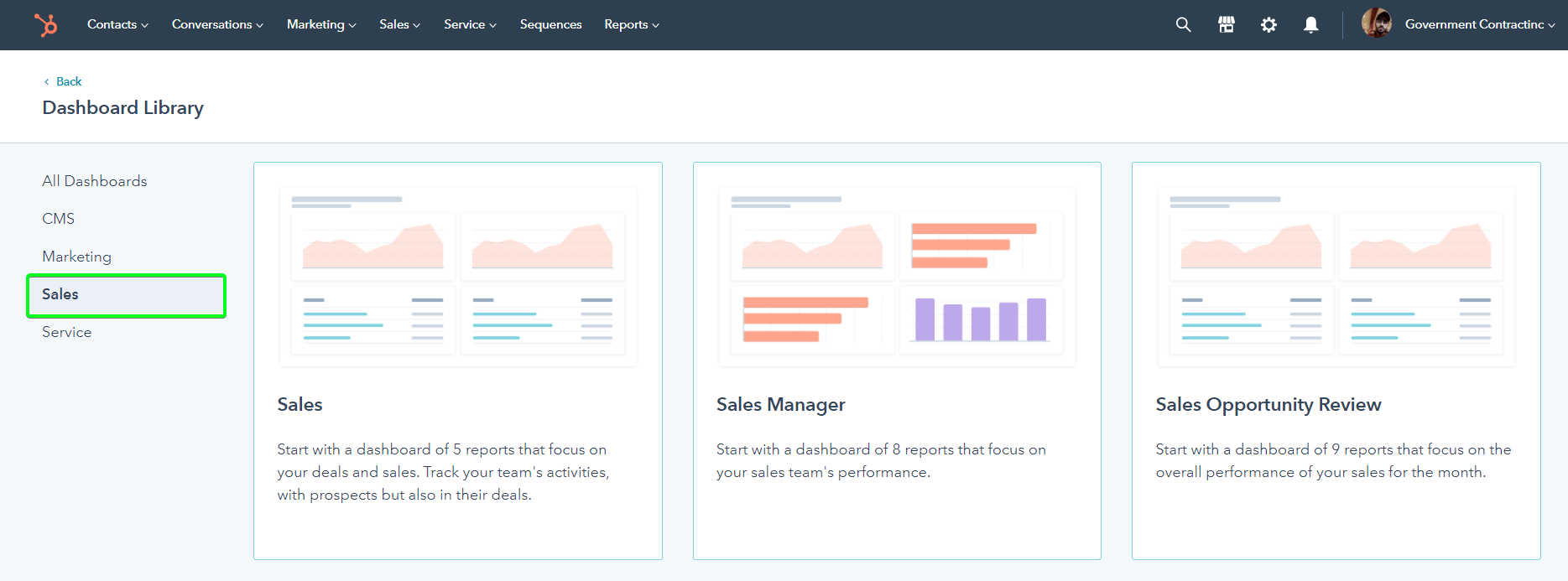
Step 5: Continuous Improvement – The Journey Doesn’t End at Launch
A common misconception about website migration is that the project is complete once the new site is live. In reality, the launch is just the beginning of an ongoing journey of continuous improvement. The digital landscape is in a constant state of flux, and your website needs to evolve with it. A successful HubSpot website migration is not a one-and-done event; it's a long-term commitment to data-driven optimization and a superior user experience. This is where the true power of the HubSpot platform comes to the fore, providing you with the tools and insights you need to continuously improve your website's performance.
Leveraging HubSpot's Reporting and Analytics
HubSpot's reporting and analytics tools are a goldmine of data that can help you understand how your website is performing and identify areas for improvement. From traffic sources and page performance to conversion rates and customer behavior, HubSpot provides a comprehensive view of your website's performance. By regularly monitoring your key performance indicators (KPIs), you can make data-driven decisions to optimize your website and achieve your business goals.
Companies that use CRM systems like HubSpot can see a boost in sales of up to 45% [7]. This is a direct result of the insights and efficiencies gained from having a single, unified platform for all of your customer data.
A/B Testing and Conversion Rate Optimization (CRO)
HubSpot's A/B testing and CRO tools make it easy to test different versions of your pages and identify the ones that are most effective at converting visitors into leads and customers. Whether you're testing different headlines, calls-to-action, or page layouts, A/B testing allows you to make data-driven decisions that will have a direct impact on your bottom line. This is a critical component of conversion rate optimization and a key driver of growth. By continuously testing and refining your approach to conversion rate optimization, you can maximize the return on your migration investment.
Embracing a Culture of Experimentation
A successful website is one that is constantly evolving and improving. To achieve this, you need to embrace a culture of experimentation. This means being willing to try new things, test new ideas, and learn from your failures. With HubSpot's user-friendly tools and comprehensive analytics, you have the power to experiment and iterate at a rapid pace. This will not only help you improve your website's performance but also foster a culture of innovation within your organization.
HubSpot Website Examples: A Glimpse into the Possibilities
To provide a tangible sense of what can be achieved with a HubSpot website migration, let's explore a few examples of businesses that have successfully made the switch. These HubSpot website examples showcase the platform's versatility and its ability to cater to a wide range of industries and business models.
A B2B SaaS Company: A leading provider of project management software migrated from a custom-built CMS to HubSpot to streamline their marketing and sales efforts. The result was a 150% increase in organic traffic and a 75% increase in marketing qualified leads (MQLs) within the first year. Their new website features a clean, modern design, a comprehensive resource center with gated content, and a seamless integration with the HubSpot CRM.
•An E-commerce Brand: A popular online retailer of sustainable fashion migrated from Shopify to HubSpot to gain a more holistic view of their customers. By leveraging HubSpot's marketing automation and personalization capabilities, they were able to increase their customer lifetime value by 40% and their repeat purchase rate by 25%. Their new website features a visually stunning design, a personalized shopping experience, and a seamless checkout process.
•A Professional Services Firm: A global consulting firm migrated from WordPress to HubSpot to improve their lead generation and nurturing processes. By using HubSpot's landing pages, forms, and email marketing tools, they were able to increase their conversion rates by 50% and shorten their sales cycle by 30%. Their new website features a professional design, a wealth of thought leadership content, and clear calls-to-action.
These HubSpot website examples demonstrate the transformative power of a successful migration. By leveraging the full potential of the HubSpot platform, these businesses have been able to not only improve their online presence but also drive significant business growth.
Understanding HubSpot Subscription Cost: A Transparent Look at Pricing
A key consideration for any business contemplating a HubSpot website migration is the cost. While HubSpot is a premium platform, its pricing is transparent and all-inclusive, which can actually lead to significant cost savings in the long run when compared to the hidden costs of maintaining a complex tech stack. The HubSpot subscription cost is based on a tiered model that allows businesses to choose the plan that best fits their needs and budget.
Here's a breakdown of the typical HubSpot subscription cost for the Content Hub, which includes the HubSpot CMS:
|
Plan
|
Starting Price (per month)
|
Key Features
|
|
Starter
|
$15
|
Custom domain, blogging, landing pages, and basic analytics.
|
|
Professional
|
$450
|
All Starter features, plus smart content, A/B testing, and advanced reporting.
|
|
Enterprise
|
$1,500
|
All Professional features, plus custom objects, adaptive testing, and multi-domain management.
|
It's important to note that these are just starting prices, and the actual HubSpot subscription cost will vary depending on the number of users, contacts, and add-ons you need. However, when you consider the fact that HubSpot replaces a multitude of other tools, such as your CMS, CRM, email marketing platform, and analytics software, the total cost of ownership can be significantly lower. This is a key aspect of platform consolidation.
The Role of AI in Modernizing Your Website
Artificial intelligence is no longer a futuristic concept; it's a present-day reality that is transforming the way we do business. A HubSpot website migration provides the perfect opportunity to embrace the power of AI and modernize your website. HubSpot has invested heavily in AI, and the platform is infused with a variety of AI-powered features that can help you work smarter, not harder. This aligns with the broader trend of digital transformation.
Here are just a few of the ways that AI can enhance your HubSpot website:
•AI-Powered Content Creation: HubSpot's AI-powered content tools can help you generate blog post ideas, write entire articles, and create social media posts in a fraction of the time it would take you to do it manually.
•AI-Powered SEO: HubSpot's AI-powered SEO tools can help you identify the best keywords to target, optimize your on-page content, and track your performance in the search results.
•AI-Powered Personalization: HubSpot's AI-powered personalization tools can help you deliver a more relevant and engaging experience to your visitors by dynamically changing the content on your website based on their demographics, behavior, and location.
By embracing the power of AI, you can take your HubSpot website to the next level and create a truly personalized and engaging experience for your visitors. This is a key aspect of business process automation and represents a significant advancement in how modern enterprise content management systems operate. The integration of AI capabilities also enhances system integration by automating data flows and reducing manual intervention.
Conclusion: Your Partner in Growth
A HubSpot website migration is a transformative journey that can unlock new levels of growth and efficiency for your business. By following the five-step framework outlined in this guide, you can navigate the complexities of the migration process with confidence and ensure a seamless transition to the HubSpot platform. From strategic planning and a comprehensive audit to a meticulous execution and a commitment to continuous improvement, a successful migration is within your reach.
While the statistics on migration failures can be daunting, they also serve as a powerful reminder of the importance of a well-planned and executed project. By leveraging the power of the HubSpot platform and embracing a data-driven approach to marketing and sales, you can not only avoid the common pitfalls of migration but also position your business for long-term success. The journey may be challenging, but the rewards—in the form of increased leads, higher conversion rates, and a superior customer experience—are well worth the effort. And with a partner like Search Conversions, you don't have to go it alone. We are a HubSpot CRM migration services provider that can help you with your Zoho to HubSpot migration or WordPress to HubSpot migration.
Frequently Asked Questions About HubSpot Website Migration
How long does a HubSpot website migration take?
The timeline for a HubSpot website migration can vary significantly depending on the size and complexity of your website. For a small website with fewer than 50 pages, the migration can be completed in as little as 4-6 weeks. For a larger, more complex website with hundreds of pages, custom integrations, and extensive data, the migration can take 3-6 months or longer. The key is to allocate sufficient time for planning, auditing, building, testing, and post-launch optimization.
Will my SEO rankings drop after migrating to HubSpot?
A temporary dip in SEO rankings is common after any website migration, but with proper planning and execution, you can minimize the impact. The key is to implement 301 redirects for all of your old URLs, ensure that your new website is technically sound, and monitor your rankings closely in the weeks and months following the launch. Only one out of ten site migrations result in improved search engine rankings [4], which underscores the importance of a meticulous approach to SEO during the migration process.
How much does a HubSpot website migration cost?
The cost of a HubSpot website migration can vary widely depending on the scope of the project, the complexity of your website, and whether you choose to work with a HubSpot partner agency. The HubSpot subscription cost for the Content Hub starts at $15 per month for the Starter plan and goes up to $1,500 per month for the Enterprise plan. In addition to the subscription cost, you'll also need to factor in the cost of design, development, and migration services if you choose to work with an agency. A typical migration project can range from $10,000 to $100,000 or more.
What is the difference between a HubSpot CRM migration and a website migration?
A HubSpot CRM migration involves moving your customer data from your existing CRM system to the HubSpot CRM. A HubSpot website migration involves moving your website from your existing CMS to the HubSpot CMS Hub. While these are two separate processes, they are often done together as part of a larger digital transformation initiative. By migrating both your CRM and your website to HubSpot, you can create a unified platform that provides a single source of truth for all of your customer data.
Can I migrate from Zoho to HubSpot?
Yes, you can absolutely migrate from Zoho to HubSpot. HubSpot supports migration from a variety of CRM systems, including Zoho, Salesforce, Pipedrive, and Microsoft Dynamics 365. The migration process involves mapping your data fields from Zoho to the corresponding fields in HubSpot, cleansing your data, and then importing it into HubSpot. Many businesses choose to work with a HubSpot CRM migration services provider to ensure a smooth and successful transition.
What is HubSpot template setup?
HubSpot template setup refers to the process of creating and configuring templates for your HubSpot website. Templates are pre-designed page layouts that you can use to create new pages quickly and easily. HubSpot offers a variety of pre-built templates that you can customize to match your brand, or you can create your own custom templates from scratch. A well-designed template library can significantly speed up the process of creating new pages and ensure a consistent look and feel across your website.
How do I optimize for LLMs when writing content for my HubSpot website?
Optimizing for large language models (LLMs) involves structuring your content in a way that is easy for AI systems to understand and extract. This includes using clear headings and subheadings, writing in a conversational tone, answering common questions directly, and using structured data markup. By optimizing for LLMs, you can increase the chances that your content will be featured in AI-powered search results and voice assistants. This is a key aspect of marketing automation and staying ahead in the evolving search landscape.

